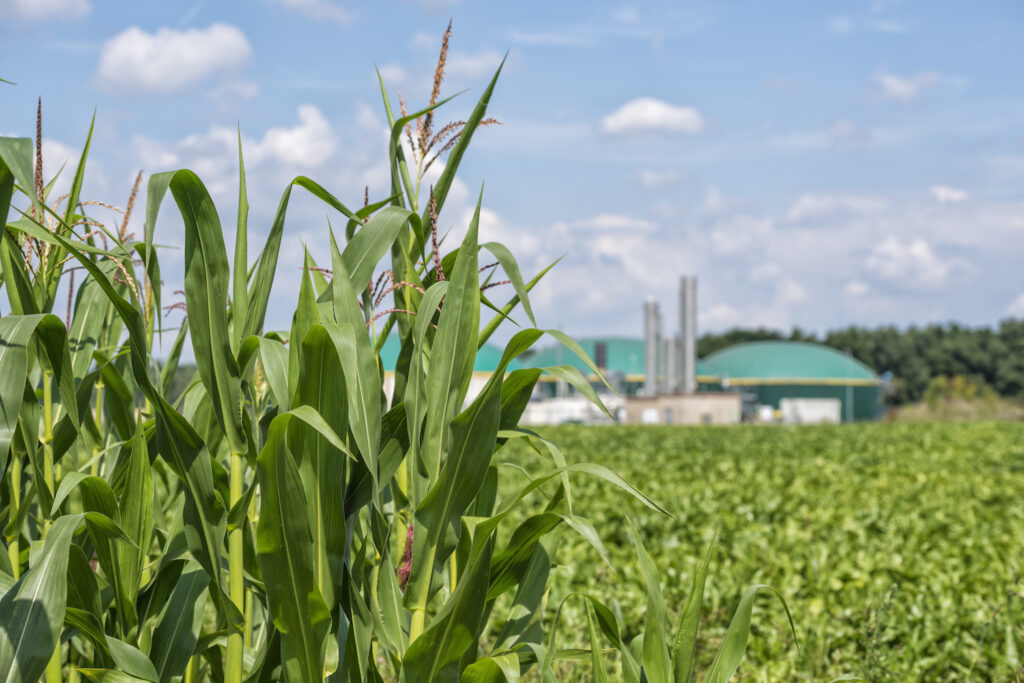AD feedstock impacted as hot dry summer hits silage volumes
24th August 2022
Reduced crop yields due to the recent hot dry weather, combined with increased input and contractor costs, means silage grown as feedstock for anaerobic digestion (AD) plants is more valuable than ever.
With higher production costs and many on-farm AD operators citing feedstock shortages this year, reducing losses in the clamp and maximising the energy generating potential of the crop is now of critical importance.
The Met Office reports that England had just 35% (23.1mm) of its average rainfall in July 2022, with the south and east of the country being especially dry. Southern England reported its driest July on record with just 10.5mm of rain, equating to 17% of its average rainfall.
Impacts on maize and wholecrop cereals
The exceptionally dry, hot weather seen in June and July has particularly affected maize crops, which have reacted to the stressful conditions by flowering much earlier than normal in mid-July. “Once maize has tasselled, it won’t grow much more than another foot, so early flowering crops will yield much less than average,” comments Andy Lee, national biogas silage specialist at FM BioEnergy.
And it’s not just maize. In many areas, wholecrop cereals such as rye have also yielded much lower than normal in many areas. “In some places, growers have reported disappointing yields, while others have decided to combine crops due to high commodity prices. Overall, this means there is less wholecrop silage available for AD and some plants are already running out of feedstock.”
Another factor which has the potential to reduce yields is eyespot (Aureobasidium zeae), which is becoming more problematic due to increased levels of maize production across the country. “Maize eyespot overwinters in the soil and affects the leaves, so it has the potential to greatly reduce overall yields,” says Andy. “It favours humid conditions and some growers in the west of the country, which has received more rainfall than other places, have had to spray to control the disease, as left untreated it can reduce yields by 25-50%.”
As a result, FM Bioenergy say it’s expecting a strong demand for its feedstock supply services in the coming season and is urging plant operators who may need help with feedstock procurement to make contact sooner rather than later.

The temperature at the clamp face can increase rapidly – as much as 20°C in six hours.
Minimising silage losses
However, with higher production costs and fierce competition for feedstock due to reduced crop yields, it is more important than ever to minimise losses from the silage clamp. “As well as fermentation losses, if crops are especially dry because of the recent warm weather and are left untreated, they will be at a much higher risk of suffering losses due to aerobic spoilage, ultimately affecting AD operators’ biogas volumes and impacting their bottom line,” warns Andy.
Typical fermentation losses of untreated silage can be in the region of 10%, although adding a suitable silage treatment, such as FM BioEnergy’s Silasil Energy XD, can reduce these to around 3%. However, losses due to aerobic spoilage caused by organisms such as yeasts, can be another 5-10%.
“In a worst-case scenario growers could lose almost a fifth of their silage, which is why treatment is so important,” stresses Andy. “With climate change and warmer winters, we are seeing a lot more yeasts around. In some cases, we have counts of 12 million CFU/gFM on treated crops, so the potential for aerobic losses in the clamp is enormous.”
Andy also explains that not all silage additives and treatments are the same. Many of the treatments which are originally designed for use by livestock farmers will reduce fermentation losses, but they do not produce acetic acid, and therefore do not prevent aerobic losses.
“It’s about maintaining a balance between the good and bad organisms,” he states. “If you use the right treatment and keep the pH low, then the population of beneficial organisms is quickly supported and those which cause spoilage simply can’t compete. This preserves the carbohydrates for use in the digester, maximising biogas output.”
Preserving biogas output
To illustrate the amount of potential energy that can be lost in the clamp, Andy says growers should pay attention to temperature: “I recently looked at a freshly cut clamp of wholecrop rye. After just six hours the temperature at the face had increased by 20°C. If you think about the amount of silage crops that are water-based, and the energy needed to heat water by 20 °C, you can see how much energy is being lost as the aerobic organisms get to work digesting the valuable carbohydrates.”
To minimise aerobic losses, Andy recommends treating silage with Silasil Energy XD at harvest. “Acetic acid is probably the best natural anti-fungal there is and is excellent at controlling yeasts before they have chance to multiply,” he explains. “As the only biogas silage additive independently approved by the DLG (the German Agricultural Society) for increased methane yield and improved aerobic stability, Silasil Energy XD contains a new strain with unique metabolism that produces acetic acid very quickly – clamps can be opened in as little as two weeks compared to eight weeks for a typical livestock additive.
“With the hot dry weather showing no sign of abating, growers would be well advised to protect their silage and preserve their biogas output.”

